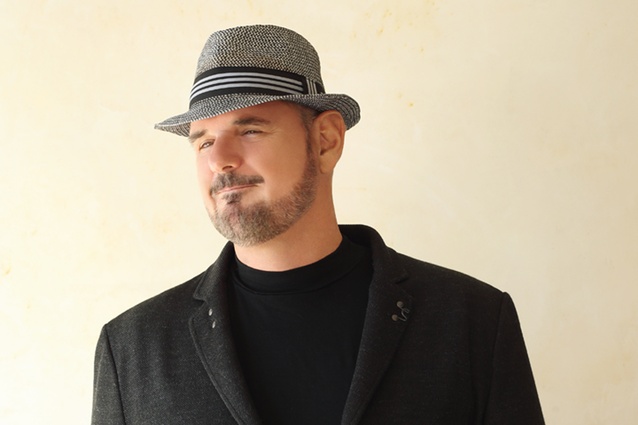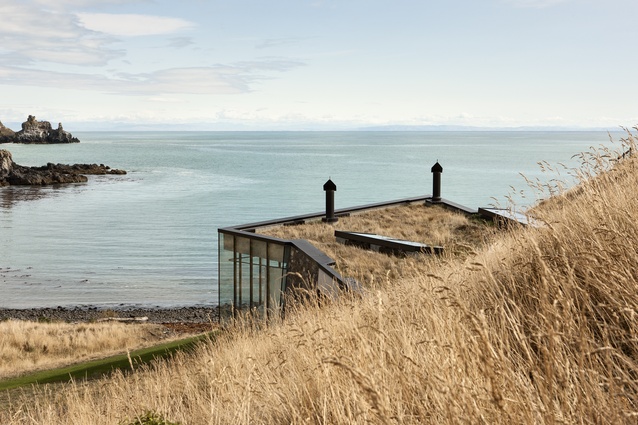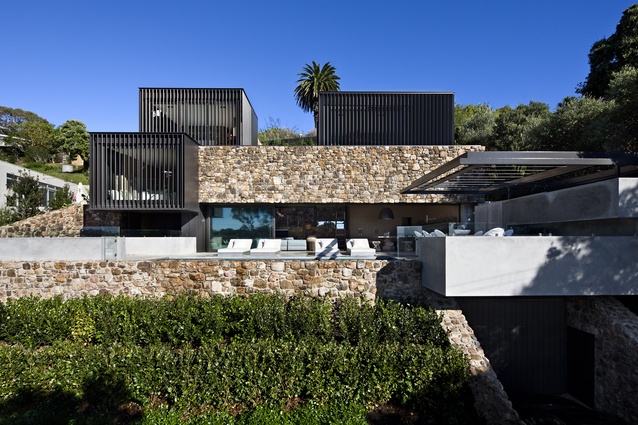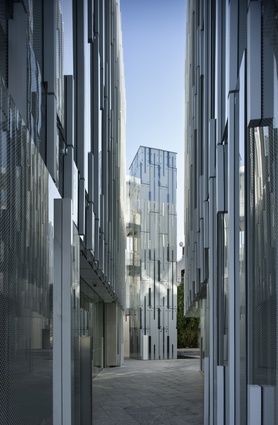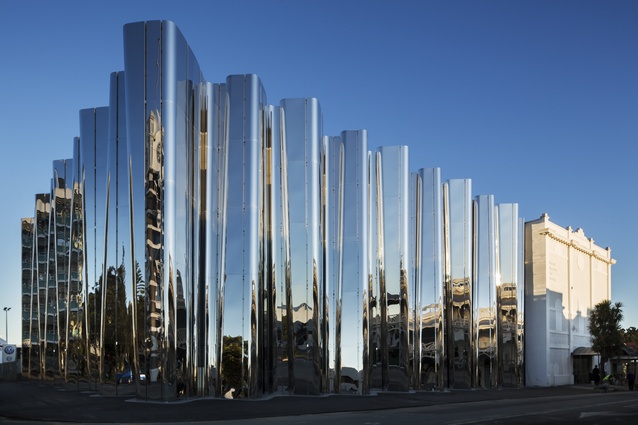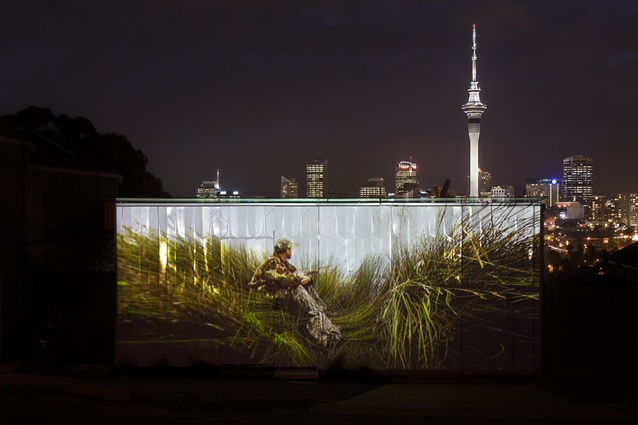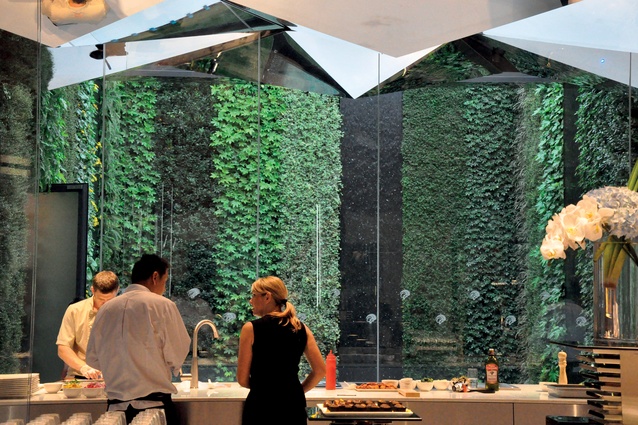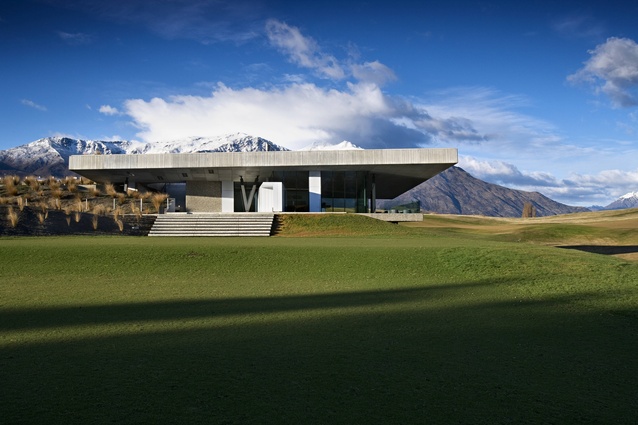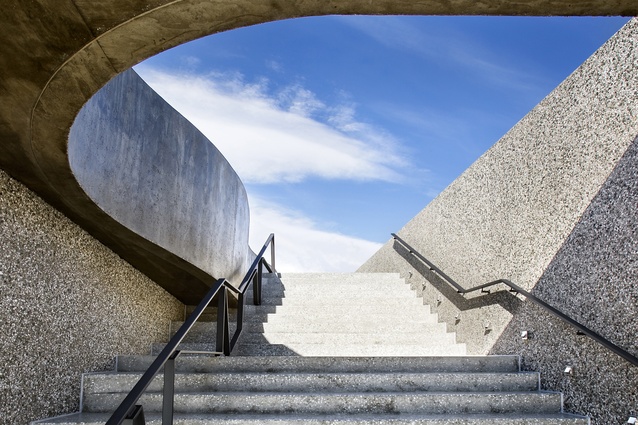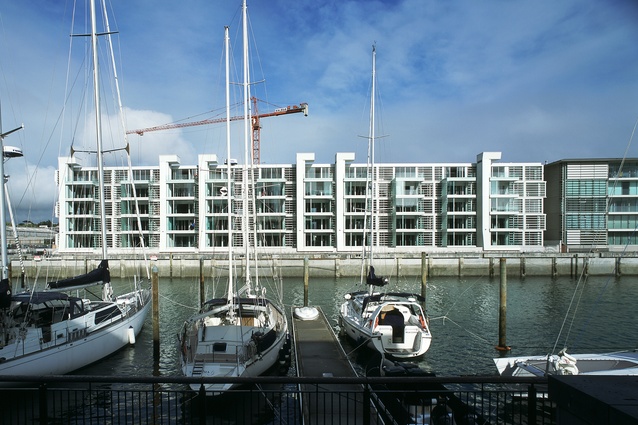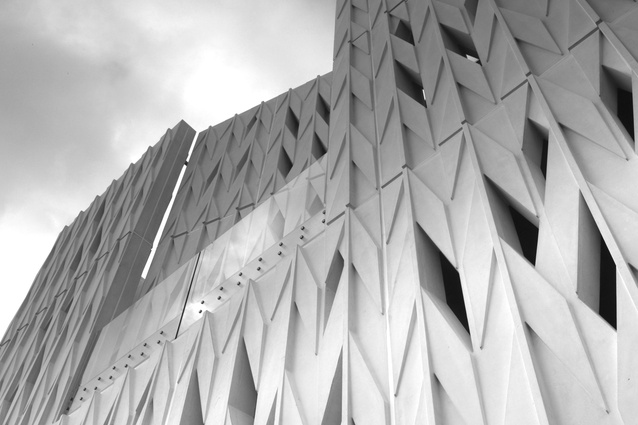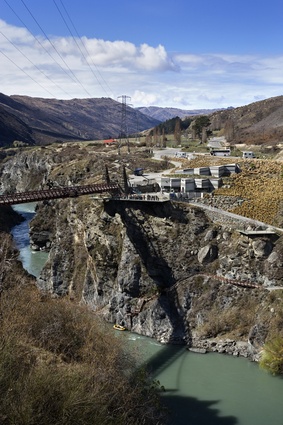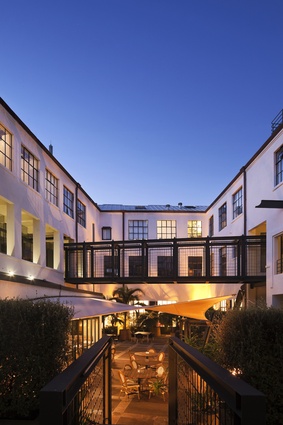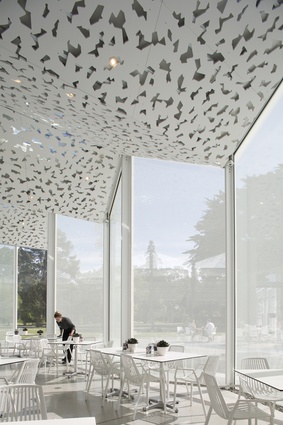Andrew Patterson: 2017 Gold Medal winner
Justine Harvey profiles the 2017 Gold Medal winner, Andrew Patterson.
While it is rare for a Gold Medal to be given to an architect only in his fifties – a period when many architects are just hitting their prime – it comes as no great surprise that Andrew Patterson is now the youngest recipient in its long history.
His Auckland-based practice Patterson Architects has certainly produced some of the most incredible works of architecture to be found in New Zealand, from the shiny undulating stainless steel homage to kinetic artist Len Lye in New Plymouth to the new and restored heritage buildings at Annandale Station in Canterbury. In recent years, the firm’s designs have appeared in Europe, India and China, as well as in and around the Pacific.
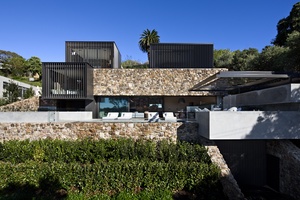
This Gold Medal interview is normally published in a ‘straight-up’ question-and-answer format, however, true to form, Andrew wanted to do things differently, stating: “It’s boring doing things just for traditional consistency.” He then asked if I would write a personal profile about him, which is no mean feat but, in many ways, his firm’s work has been very well-documented already, so reading a more personal perspective seemed to makes sense and, luckily, I’ve had the opportunity to get to know Andrew pretty well.
In 2011, when I returned to New Zealand from living overseas, I was invited to co-present a lecture with Andrew at the 2011 World Architecture Festival in Barcelona, so we decided to catch up in advance and plan our presentation. For our first meeting, Andrew invited me to his house in Herne Bay, which backs onto the Hauraki Gulf, and we ended up rowing around the harbour in a small tin rowing boat discussing architecture.
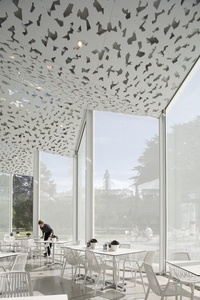
“It is a lovely sunny day and it’s the chance to do some exercise,” he explained. We clambered aboard and splashed the oars through the water, managing to row to the harbour bridge and back, during which time I was surprised to learn that he’s a reasonably adept seaman. I later learned that he is especially keen to float out on the ocean if there’s a chilly bin onboard, typically filled with gin, champagne and snacks, of course.
As I’ve come to know Andrew, I’ve also come to realise that he is adept at most things he puts his mind to, especially making cocktails, at which he is certainly one of the best I’ve ever come across – giving even Tom Cruise a serious run for his money. But, perhaps, there’s some synergy there. Perhaps making a good cocktail is a bit like making an amazing building. You have to start with a good recipe and add some flair.
Andrew’s classic Taiwawe Monkey Puzzle, for example – named after his small family bach up in Northland – is a popular drink among his friends and family. Start with a dash of good-quality vodka, add another dash or two, add a drop of banana-flavoured Malibu. Shake it up like Cruise and pour it into an elegant Mad Men-style glass and garnish with a wedge of freshly picked fruit, ideally from Taiwawe’s sub-tropical orchard set among the Northland bush.
After that, hope like heck you end up with the perfect balance of flavours – with enough oomph to put some rosiness in your cheeks and pretty as a picture to make you ‘oooh’ and ‘aaah’ before you stagger to your bed.
Cocktail-making skills aside, Andrew has that very rare trio of gifts in architecture: he combines being highly creative with being a clever businessman and also a total charmer. He can be a lot of fun, with an often wicked sense of humour but he is also a perfectionist, with high expectations of the people around him.
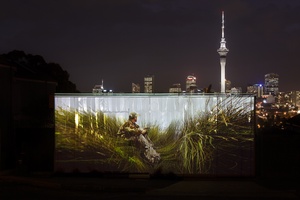
I’ve been told that Andrew can be tough to work for at times; his opinionated character ensures that he will often call a spade a spade, enjoying a good argument even if it means stepping on some toes and other egos in the process. His passion for a subject, particularly architecture, is indisputable, but he also moves on quickly from an argument.
One of the interesting things I’ve discovered about Andrew is that he is also a bit of a dreamer – you will often see him drift off in a world of his own making, sometimes ignoring those around him. But when focused, he has the ability to read people extremely well and will play to people’s weaknesses if they give him half a chance. If his passion for architecture dries up, I’m sure he’d make a fantastic professional poker player!
But it is this ability that is central to his knack of ‘making things happen’, his desire to challenge the status quo and to push for something new and different in architecture, that ensures his practice delivers the amazingly diverse range of high-quality buildings we see around the country.
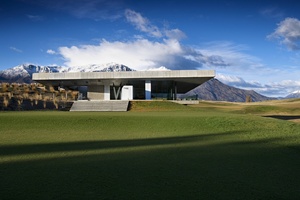
Those who understand Andrew earn his respect and friendship, thus he has a very close-knit circle of friends and is kind and generous with the people he cares about. His long-term partner is Colombian-born geologist Andres Arcila-Rivera, described by those who know him as a bit of a George Clooney lookalike, who is a warm and patient sidekick – the perfect foil to a force of nature like Andrew.
And this pair certainly knows how to celebrate. I recall one instance, in 2015, when Patterson Associates won the supreme prize at the Interior Awards for its design of the New Zealand pavilion at the 2012 Frankfurt Book Fair. Andrew accepted the trophy on his firm’s behalf along with an aluminium briefcase filled with banknotes – mafia style!
After the party, filled with Mt. Difficulty pinot noir and espresso Martinis, revellers traipsed from the Sapphire Room at Ponsonby Central over the road to the discreet Golden Dawn bar, when Andrew promptly slapped the briefcase down on the bar and ordered a very long line of cocktails for the guests. Consequently, there were quite a few interesting tales that arose that night, which is often the case with Andrew; adventures seem to follow him everywhere or, perhaps, he follows them – I’m not sure which follows which.
When Andrew was in his twenties, he bought a coastal plot of land at Mimiwhangata, about 45km north of Whangarei, an old Māori pa site called Taiwawe, meaning ‘where the tide is always right’. This secluded cove overlooks the stunning turquoise-coloured ocean you can only find up north, as well as a sacred island that requires a short boat or kayak trip to visit.
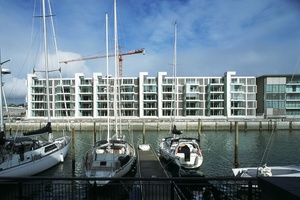
He describes this second home as having had a big influence on his architecture. “Taiwawe is all about the natural environment, but there’s a lot there that’s actually man-made.” By comparison, I ask him what he thinks about the increasing urbanisation of the natural environment in New Zealand to which he responds: “It’s kind of like an inevitable depressing march; we just want to follow the rest of the world all the time; you’d think we’d learn from the rest of the world.”
I suggest that we know what to do but people seem unwilling to do it, while in Europe, many are now fighting to protect the environment. “Yes, but the bird there has long flown,” he states. “You travel down the Mediterranean coast and it’s just awful compared with New Zealand; it’s soulless. Andres and I just spent some time on the Amalfi Coast, and I stood outside Amalfi and imagined what it might have been like 2,000 years ago without buildings. It would have left anything in New Zealand for dead; this enormous marble rock chasm, wonderful jungle, beautiful beach and the Mediterranean lapping at it with this flowing river of boulders coming down.
But you look at it now, and there is city everywhere. Certainly it can be quite picturesque but, back then, it would have left Piha for dead. Now, Piha leaves it for dead because it is less touched. Isn’t the lesson to leave some places that you’re not building on at all, or to touch everything much more sensitively.”
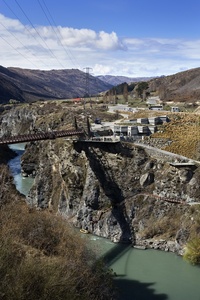
So what has driven Andrew’s immense passion to “leave New Zealand a more beautiful place”, which he suggests is his Hippocratic oath. “I’m just the same as a lot of architects, who always wanted to be architects, but the thing that changed it for me was that I grew up with a great upbringing but in this very average suburb in Hamilton. It was like the New Zealand version of the American subdivision where all these families arrived and built 30 houses on a street in two years. All the children were the same age and it was fantastic to play by the Waikato River, but there was no architecture or culture at all. I can’t remember seeing a good sculptural building before I had a job at the Horotiu freezing works, which had all of these big wonderfully shaped air conditioning units on its roof set against the sky. They were cool!” he adds with tongue in cheek.
“I came to architecture school sketching the air cons on the roofof the freezing works. But the point is that we have unique environment left in New Zealand to be inspired by as architects. For example, skiing up in Valley Poma, under the pinnacles at Whakapapa, where there’s a wonderful natural room/amphitheatre; or snorkling in the Bay of Islands where there are huge rock cornices over carpets of white sand.”
Growing up with his family in the King Country, Andrew was hugely influenced by mātauranga Māori or ‘the body of knowledge originating from Māori ancestors, including the Māori worldview and perspectives, Māori creativity and cultural practices’. From this understanding, he coined the phrase “form follows whanau”, which respects the influence of the people for whom the building is designed.
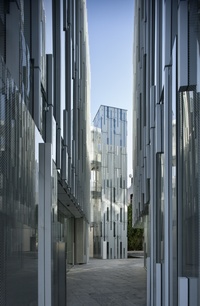
In referencing Māori structures; Patterson’s buildings are often regarded as ‘identities,’ incorporating Māori history and mythology, and especially Pacific pattern language, to express their relationship with local culture and with the land in particular.
His practice philosophy “is to connect beauty with environments and people”, to create architecture that makes people feel as if they belong to the place. These concepts are very evident in Patterson Associates’ body of work.
The studio first made its name designing residential projects that are sensitive to the New Zealand landscape and mostly situated on the coast, followed by a series of urban projects, including mixed-use retrofitted buildings like Axis in Parnell and D72 in Mount Eden.
Larger commercial and apartment buildings specialising in sustainable design followed, with one particular highlight, the Geyser building at the bottom of Auckland’s Parnell Rise – a light and ethereal form completed in 2012 – still New Zealand’s only new build 6-Green-Star rated office building.
The practice has also designed numerous hospitality projects, including hotels (Cape Kidnappers), lodges (Kinloch Club), tourism (AJ Hackett Bungy) and leisure (Michael Hill Clubhouse), as well as exhibitions (New Zealand’s country of honour pavilion at the Frankfurt Book Fair in Germany) and civic projects (the Len Lye Centre).
In my editorial role, I’ve enjoyed attending a number of parties in Patterson-designed buildings. A Christmas party at Mai Mai house a few years ago offered a unique night-time view of the Auckland CBD so you almost feel as if you’re entering the cityscape from a Tardis. The Christchurch Botanic Gardens Visitor Centre provided a beautiful white oasis of calm within the lush green grounds of Hagley Park, a stark contrast to the devastating rubble of the central city, post-earthquakes.
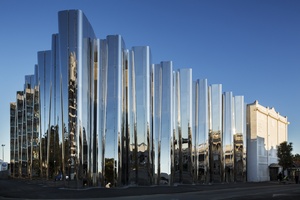
But, for me, the opening of the Len Lye Centre was probably the most profound. This building is such a unique proposition in New Zealand, an architectural experience that engages with members of the public on so many levels. The launch party was held on the main ramped circulation route just inside the entrance, and this space became a natural stage for talks and conversation, enhanced by its dramatic sculptural backdrop.
Here, a synergistic blend of architecture, art and performance transports imaginations into new places, but it is the imaginations of Andrew Patterson and his team, as well as sheer hard work, which have really inspired this Gold Medal.
“He tangata, he tangata, he tangata,” he says. “Design needs to transport New Zealanders into new and exciting places in order to reveal how important our built environment is going to be to this land.”
For the full list of winners of the 2017 New Zealand Architecture Awards, see here.

